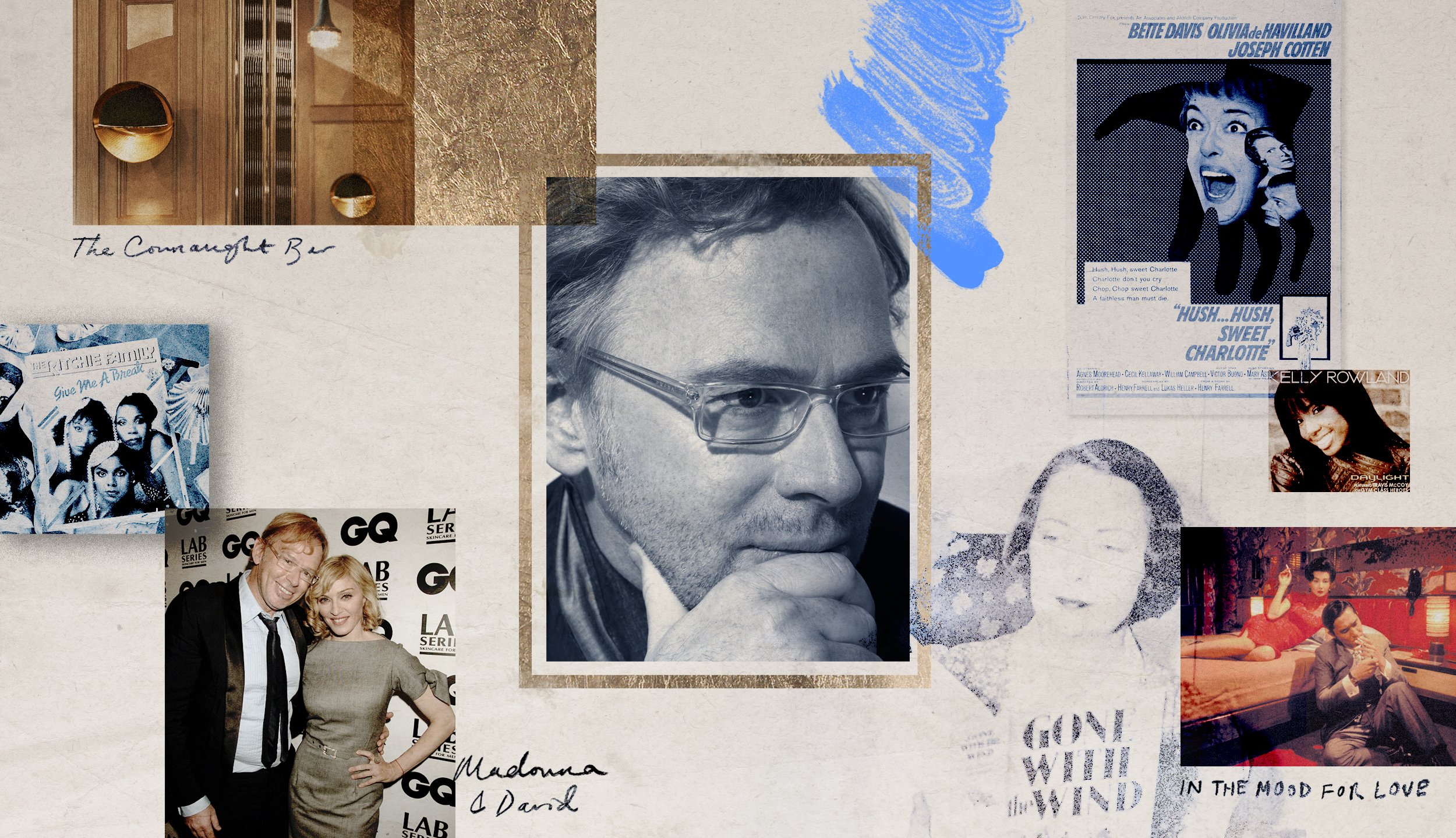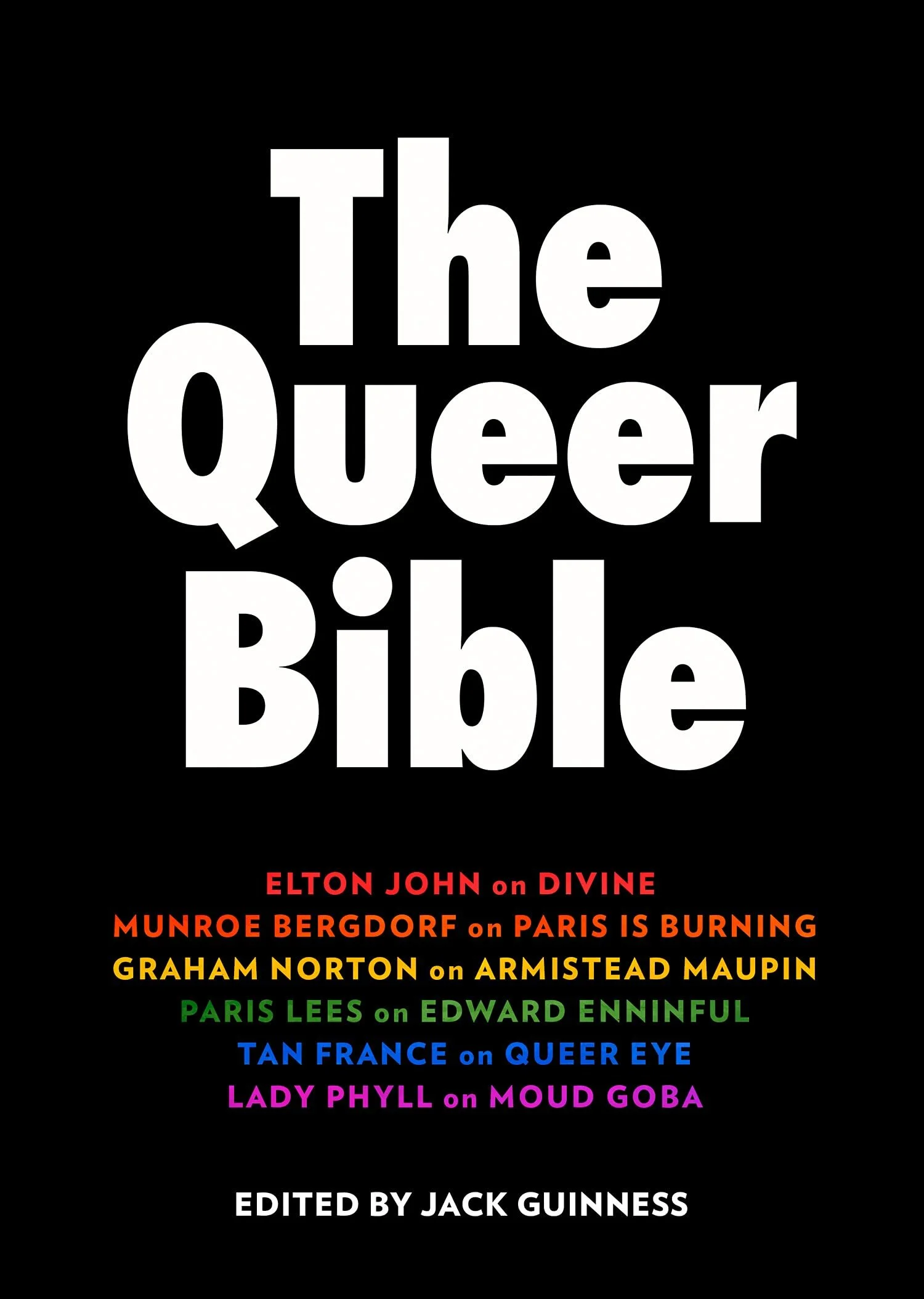In Memoriam: David Collins by David Kendall
Original collage by Alexander Innes.
David Kendall met David Collins in 2007 and joined David Collins Studio shortly thereafter, where he still works in marketing and communications. He collaborated on Collins’ book ABCDCS which was published posthumously by ASSOULINE in 2014. Monday 17th July , 2023 marks the tenth anniversary of Collins’ untimely death from melanoma.
“Because simple is never easy”
I met David Collins, the supremely affable, wickedly funny, and maverick Irish interior architect, who inspired devotion from all whom he crossed paths with, at Duckie in 2007. He was bedecked in a grey Prada crew neck t-shirt, denim blue jeans, and a leather cuff, that was more fashion than fetish, and he offered me a job in his practice that night as we skipped between The Royal Vauxhall Tavern and one of those glossy nightclubs that were under the Vauxhall arches.
My relationship with David sat at the centre of the Venn diagram of best-friend, Boy-Friday, travel companion, and paternal surrogate. Regardless of how it is defined, I am eternally grateful for our closeness and for the time that we had together, as it was a rare and wonderful thing.
David’s Studio, which he envisioned as a holistic design office straddling the disciplines of architecture, furniture, and lighting, akin to 20th century Art Deco and modernist designers, contributed in its own way to the landscape of queer architectural spaces. His Studio’s projects were conceived with his quixotic creative vision which manifested in spaces that were glamorous and a bit subversive, at once masculine and feminine, postmodern with a dollop of well-considered camp. His creative output resulted in refined but sensational technicolour spaces, where the layered set-pieces that are his nuanced designs revealed themselves over time and resonated emotionally with the well-lit people populating them. His oeuvre, much of which still stands today – including The Wolseley with its Japanned lacquer and Klimt-inspired stencilling, The Connaught Bar that is a Cubist ode to the topography of Connaught in Ireland, and Bob Bob Ricard, a luxurious, almost Constructivist dining car – comprises grand yet surprisingly welcoming spaces, timeless artifices at once polished yet hand-crafted.
You cannot talk about David without discussing taste, and he often talked about the line between good taste and bad taste being infinitesimal. But whilst quite a lot has been published about David and his resplendent home in Earls Court, which housed his collection of beautiful and rarified trinkets and bibelots – including an assortment of miniature cast-bronze boxes embellished with cartoon-like imagery concealing poetry (the romantic intricacies of which David loved) by the French jeweller Line Vautrin – to me David was an arbiter of taste across so many more mediums than just architecture and interiors.
As queer people often do, David held his own canon of cultural obsessions and private passions in high reverence. We find comfort in the books, films, songs and artists that we love, and these subconsciously inform so much of what we do and of what we seek out, creating a personal frame of reference. David believed that the value of one beautiful object was commensurate with another regardless of their respective provenance. A mass-produced, jade-green hana sakura donburi – a blossom-pattern rice bowl that he could have found anywhere – was the first item that greeted you when you entered his home, a ubiquitous item that he just found beautiful, and which was the perfect foil to his big-name 20th century collection.
David was a polymath of sorts and his generosity and benevolence really spiked when priming you with his knowledge of his favourites – which I think is a trait shared by the kindest and smartest of people. He would often hand me a dog-eared paperback, insisting that I read it as he was certain that I would adore it, and he was almost always right (albeit when he very kindly picked up a few of the Tudor romps of Philippa Gregory at the airport for me, perhaps not!). The things that he loved could be cute, beautiful, grand or silly, but never pedestrian, and it is these, potentially incidental things, that will forever remind me of him and that I want to share in the same spirit of queer posterity. They were integral to my experience of him and were, I think, a part of him.
Original collage by Alexander Innes, a British Art Director, Designer and Artist living in Beacon, New York.
In the library of our Fulham Studio, between the encyclopaedias on the canon of often queer 20th century designers (such as Jean Michel Frank, Billy Haines and Eileen Gray), and the vintage auction catalogues detailing the exquisite collections of Pierre Bergé and Yves Saint Laurent, there are three books documenting the sensational output of three of Hollywood’s Golden Age studios: Warner Bros., RKO and Paramount.
More than anything else in The Studio, a space filled with the echoes of David, these three books remind me of him, as he loved stories of the studios, and of what he built professionally, and I can see the hallmarks of Hollywood of yore in David’s aesthetics and aspirations. Equally the gossip and melodramas detailed within the books somehow evoke so much of David’s humour.
An Orry-Kelly costumed Bette Davis stepping out in a pair of borrowed navy spectator pumps in Now, Voyager that I have always understood to be the absolute distilled essence of David’s aesthetic: the navy and white monochrome simplicity; Hush Hush Sweet Charlotte; The Eyes Of Laura Mars; Wong Kar Wai’s In The Mood For Love, which seems to uncannily divine every Prada collection past, present and future; Bruce Weber’s Chop Suey with its dreamy sexuality that featured Francis Faye, “Gay, gay, gay”, who he loved!; the importance of Can’t Stop The Music, not for its campery but because it introduced The Ritchie Family, in whose music he found a manufactured beauty.
He really wanted to make his own film and was dismayed that he couldn’t buy the rights to Caroline Blackwood’s The Last Of The Duchess as he was fascinated by Wallace Simpson. He did, however, end up writing a scene for his close friend Madonna’s contribution to the Wallace Simpson mythos, W.E., which he also acted in, where he is adorable with his mellifluous and quite cheeky, Irish lilt.
He also tried to buy the rights to adapt the story of how Margaret Mitchell wrote Gone With The Wind, and I wonder how much of his architectural career was inspired by dreaming of Tara, as he once described himself to me as, “a faggy child who obsessively drew shutters over pictures of houses”, which I always found to be endearingly cute.
Original collage by Alexander Innes, a British Art Director, Designer and Artist living in Beacon, New York.
David was always writing songs and lyrics in his Hermes Ulysse notebook (“The best songs come complete and come from nowhere”), and would sometimes send these to William Orbit who he collaborated with by providing the lyrics for Madonna’s Substitute For Love. But Madonna aside, his musical tastes were cemented, aged 21, by hunting down and buying the record Flowers by The Emotions (“disco-adjacent”). He loved Donna Summer and The Three Degrees, Anne Nesby’s R’n’B album I’m Here for You, and Kelly Rowland (“The true star of Destiny’s Child”). His favourite singer by far was Shirley Horne (L.A. Breakdown was his most-favourite and discussed song), and the thing that he loved about her, and which connected him to each of these singers, was her masterful voice and how it changed over time, similarly to the aged patinas of his interiors – both topics that I happily listened to him obsess over.
The books that he loved were well-written 20th century English comedies, Mapp & Lucia (“The Royce!”), Jeeves and Wooster, Scoop, and of course, the aforementioned, Caroline Blackwood (Great Granny Webster) and her wit.
David was of a generation that researched beauty as a pastime, someone who understood the varieties and complexities of beauty, and that beauty could be many things and could arise in many forms. His projects could easily be seen through a lens of grandeur, but to David they were always exercises in simplicity (“Because simple is never easy”), and why be easy?
David Collins Studio continues, and David’s business partner since 1988 and The Studio’s CEO, Iain Watson, has created a Foundation in his name which supports contemporary artists across a variety of artistic mediums. He is always mindful to select disciplines that feel spiritually aligned with his passions, including furniture, poetry, film-making, and it makes us so happy for David’s legacy to be able to support incredible queer artists such as Tanoa Sasraku, Savinder Bual and Alex Baczyński-Jenkins through the Foundation, and I know that this would have also made David very happy.
Follow David Collins Studio here.




